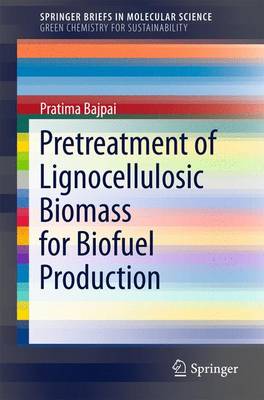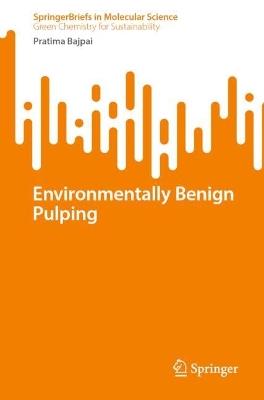SpringerBriefs in Green Chemistry for Sustainability
2 total works
Pretreatment of Lignocellulosic Biomass for Biofuel Production
by Pratima Bajpai
The book describes the pretreatment of lignocellulosic biomass for biomass-to-biofuel conversion processes, which is an important step in increasing ethanol production for biofuels. It also highlights the main challenges and suggests possible ways to make these technologies feasible for the biofuel industry. The biological conversion of cellulosic biomass into bioethanol is based on the chemical and biological breakdown of biomass into aqueous sugars, for example using hydrolytic enzymes. The fermentable sugars can then be further processed into ethanol or other advanced biofuels. Pretreatment is required to break down the lignin structure and disrupt the crystalline structure of cellulose so that the acids or enzymes can easily access and hydrolyze the cellulose. Pre-treatment can be the most expensive process in converting biomass to fuel, but there is great potential for improving the efficiency and lowering costs through further research and development. This book is aimed at academics and industrial practitioners who are interested in the higher production of ethanol for biofuels.
This book provides the most up-to-date and comprehensive information on the state-of-the-art techniques and aspects involved in environment-friendly pulping technologies. Traditional chemical and semi-chemical pulping processes are not environmentally friendly. Therefore, it has become important to look for alternative approaches to mitigate wastewater emissions in the paper industry, by making more stringent regulations to improve environmental conservation. In response to this problem, new raw materials need to be explored to replace traditional choices and also new pulping processes need to be developed based on less polluting, more easily recovered reagents. This book presents new and emerging deep eutectic solvents for lignocellulosic biomass pretreatment, and discusses the effects of deep eutectic solvents on biomass pretreatment and the production of value-added products. It also introduces biotechnological methods of pulping. Biotechnological processes help to make manufacturing processes cleaner and more efficient by reducing toxic chemical pollution and greenhouse gas emissions. Given its scope, this book is of interest to applied chemists, foresters, chemical engineers, wood scientists, along with engineers and researchers involved in the pulp and paper industry as a valuable reference.

